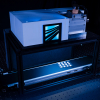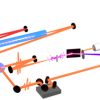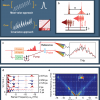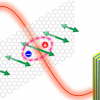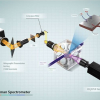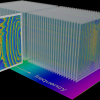Scientists from the Ecole Polytechnique Federale de Lausanne (EPFL) have developed a new method to efficiently measure electron transfer in dye-sensitised, transition-metal oxide photovoltaics. Sensitised solar cells consisting of a molecular or solid-state sensitiser that serves to collect light and inject an electron into a substrate that favours their migration are among the most studied photovoltaic systems at present. Despite its importance in determining the potential of a photovoltaic device, current methods for monitoring the interfacial electron transfer remain ambiguous. Now, using deep-ultraviolet continuum pulses, EPFL scientists have developed a substrate-specific method to detect electron transfer. The work is published in the Journal of the American Chemical Society.
The work was carried out by the lab of Majed Chergui at EPFL, which specialises in ultrafast spectroscopy. The group focused on two types of dye-sensitised solar conversion systems: one based on titanium dioxide, the other on zinc-oxide nanoparticles, both of which belong to the category of transition-metal oxide (TMO) substrates. These TMOs are characterised by specific absorption bands, which are fingerprints of the system and are due to neutral electron-hole pairs, called an exciton.
The EPFL team aimed to overcome the limitations of current methods of measuring electron transfer, which all use light in the visible-to-terahertz frequencies (wavelengths around 400–30,000 nm). However, this approach is sensitive to carriers that remain free in the TMO substrate. They are therefore unspecific to the type of substrate and cannot be extended to the new generation of solid-state-sensitised solar cells (such as those using perovskites as sensitisers). Instead, the researchers at EPFL used deep-ultraviolet (260–380 nm wavelength) continuum pulses to probe the TMO substrates in the region of their excitonic transitions and detect electron transfer, via their response. This opens a route to the study of solid-state sensitised cells, as there is hope that the response of the substrate will be distinguished from that of the sensitiser.



